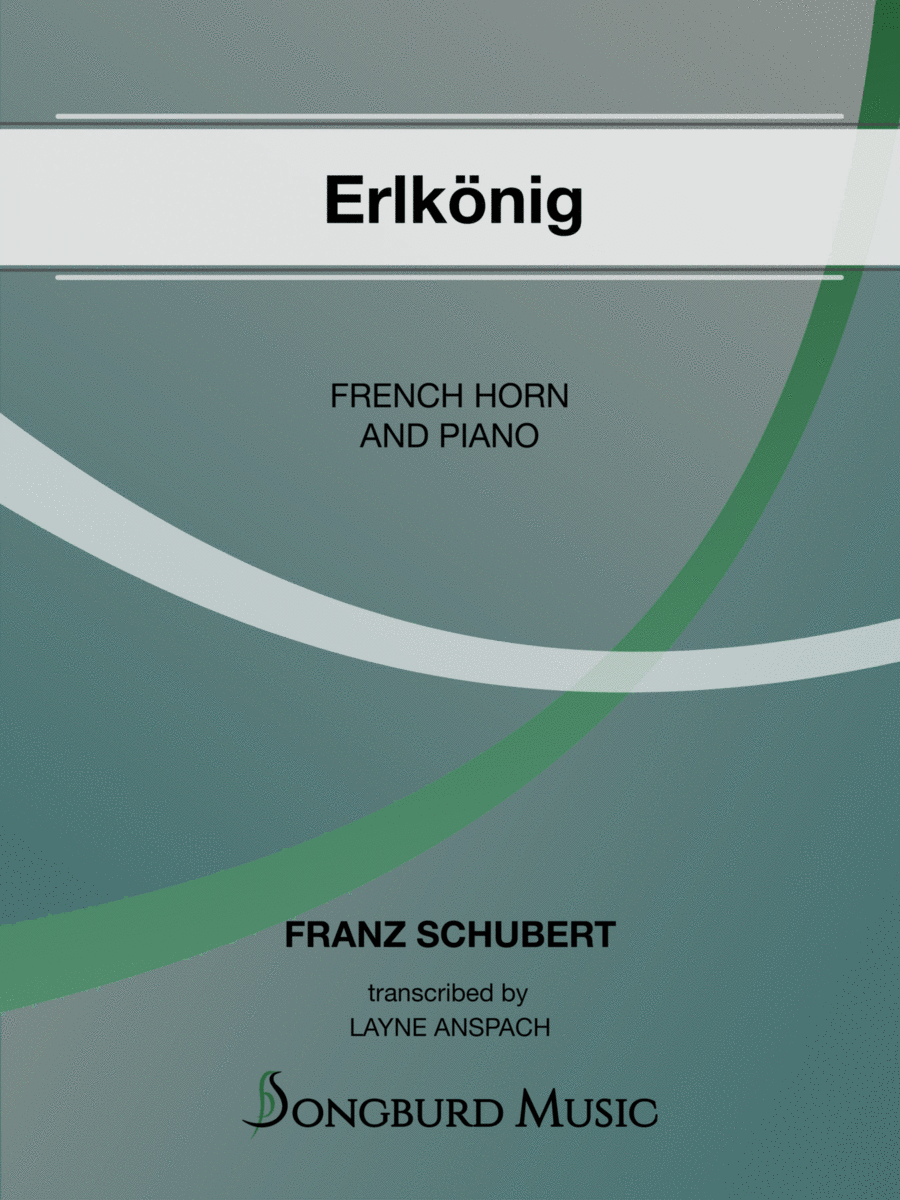French Horn,Piano - Level 4 - Digital Download SKU: A0.1416182 Composed by Franz Schumbert. Arranged by Layne Anspach. Classical. Score and part. 14 pages. Songburd Music #997866. Published by Songburd Music (A0.1416182). FRANZ SCHUBERT was an Austrian composer native to the cosmopolitan city of Vienna, colorfully called the âCity of Musicâ as so many other non-native musicians composed or performed there, while others such as Mozart and Beethoven called it home.  While only 20 years of age in the year of 1814 Schubert composed a remarkable number of lieder (songs), drawing upon the works of many different poets of the period, which eventually connected him with the poems of Johann Goethe.  This lead Schubert in the year of 1815 to compose the well-known Erlkönig, op. 1 D. 328, based upon Goetheâs poem Der Erlköning, which was taken and revised from a widely told Scandinavian folk tale about a sinister daughter of a forest-dwelling Elf King. Johann Wolfgang von Goethe was a poet, playwright and novelist who is thought to have been influenced by the Sturm und Drang literary movement, becoming perhaps one of the greatest authors in the German language whose works have had a lasting impression on Western literature to this day.  Notably, it ought to be mentioned that many of his poems were set to music by the likes of Mozart, Liszt, Wagner, Mahler, Berlioz, Beethoven and of course Schubert, who used Goetheâs poem, Der Erlkönig, to produce one of his more fanciful art songs that depicts the death of a child who is attacked by the âking of the elves,â a mystical being who lingers in the woods only to stalk little children and kill them with a touch of his hand. The story of the Erlkönig is considered by some to have come from the Danish folk ballad Elveskud, and that Goetheâs variant was inspired by a work written by the philosopher, Johann Gottfried von Herder.  It tells the story of a boy who is being carried home by his father during the night, and the child hears noises and seems to see things in the woods, while the father attempts to comfort the son by explaining away the things that scare him, all the while riding ever faster on horseback, only in the end to discover that his son has died. (The Erlkönig translates literally from the German as âAlder Kingâ rather than the commonly used âElf King.â)For this arrangement, German lyrics are included to assist the performer in connecting the music to the thoughts, feelings, and specific moments expressed in the words that might otherwise be lost if not aligned with the music.  Noting that changes in mood or tone of the music are better understood when aligned with the words, and by including the lyrics, the performer can phrase a passage while having a guide to see the end of the musical line. Romantic lieder allows for rubato in performance, as playing the piece exactly as written on the page will result in a less inspiring rendition.  To match the hornâs register with the vocal line, the piano part required alterations by moving some notation higher in the register.
